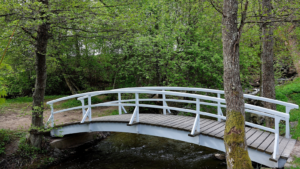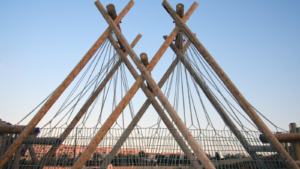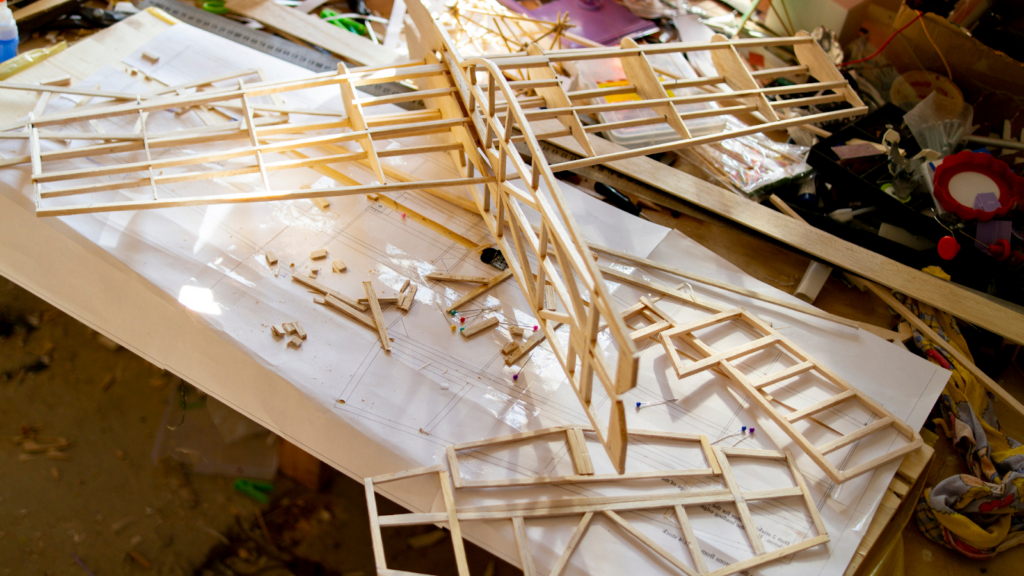
Bridges are marvels of engineering, but did you know you can create your own at home using balsa wood? Light yet strong, balsa wood offers a unique challenge for aspiring architects and engineers. This article delves into the fascinating world of balsa wood bridge designs.
Dive in and discover the art and science of building bridges. Who knows? You might just spark an interest that’ll lead to a lifetime of creativity and innovation.
Balsa Wood Bridge Designs
The Appeal of Balsa in Bridge Building
Balsa wood holds a notable place in bridge building. A minimal density characterized this specific timber. Builders recognize its exceptional strength-to-weight ratio, a quality that makes it particularly appealing for creating mini architectural marvels such as bridges. Balsa’s lightness, stemming from its porous cell structure, means that even the smallest of forces could set it into motion.
Balsa wood provides this necessary balance, maintaining structure while ensuring weight efficiency. Similarly, in bridge building, a successful bridge must carry weight without compromising its overall structure – a requirement balsa wood can satisfactorily meet.
Principles of Balsa Bridge Design
Basics of Structural Integrity
Structural integrity denotes a structure’s ability to withstand expected loads without breaking, deforming, or otherwise failing. Structural integrity in balsa bridge designs matters significantly due to balsa wood’s unique characteristics. Balsa wood possesses a high strength-to-weight ratio, it boasts a degree of pliability which allows for absorption of forces such as tension and compression; however, it can fail when exposed to excessive force or inappropriate load distribution. Hence, designers strive to balance these forces throughout the structure.
Maximizing Strength-to-Weight Ratio
In optimization of the Strength-to-Weight ratio, designers focus on robustness without adding unnecessary weight. High strength-to-weight ratio, noted as one of balsa wood’s key benefits, comprises a key aspect in bridge construction. By reinforcing areas where tension or compression is bound to be high and removing materials from areas of low stress, a designer can maintain strength while reducing weight.
Common Balsa Wood Bridge Designs

The world of balsa wood bridge designs is extensive, boasting various styles like beam, truss, arch, and suspension bridges. These models all exemplify the balance between balsa wood’s lightweight nature and strong structural integrity.
Beam Bridges
Beam bridges, simple yet efficient, serve as the initial stage of learning about bridge design. Constructed primarily from single pieces of balsa, the emphasis is on creating a flat beam supported at both ends. These designs take advantage of the strength-to-weight ratio of balsa wood. For instance, the Las Brisas Bridge, made from balsa wood, utilized this design in a real-world application.
Truss Bridges
Truss bridges, another popular design, employ a network of triangles in their construction. The strength in truss bridges comes from the distribution of forces among these triangles. Designs like the Warren Truss and Howe Truss make substantial use of this principle. For educational demonstrations, a truss bridge with a balsa wood frame, as seen in the miniature railway bridge in Balboa Park, depicts how the design balances forces within its structure.
Arch Bridges
Arch bridges and their classic silhouette have stood the test of time, surviving since ancient Roman architecture. With balsa wood’s pliability, constructing arch bridges becomes a viable option. Although complicated to construct, arch bridges display the material’s flexibility while accommodating tension and compression.
Suspension Bridges

Suspension bridges represent the pinnacle of balsa wood bridge designs, showcasing intricacy and complexity. Fine strands of balsa serve as the “cables,” displaying the lightweight tensile strength of balsa wood. This design demands precision, with an interconnected system distributing weight across the length of the bridge.
Must Know
Balsa wood bridges stand as a testament to the power of combining traditional materials with modern engineering principles. The strength and longevity of these structures hinge on the strategic integration of optimized truss designs and CAD technology. The International Balsa Bridge Building Contest and the West Point Bridge Design Contest showcase the potential of this approach. Students and engineers alike have demonstrated that balsa wood, when strategically designed and modeled, can support significant loads. Yet, the quest for perfection continues.
